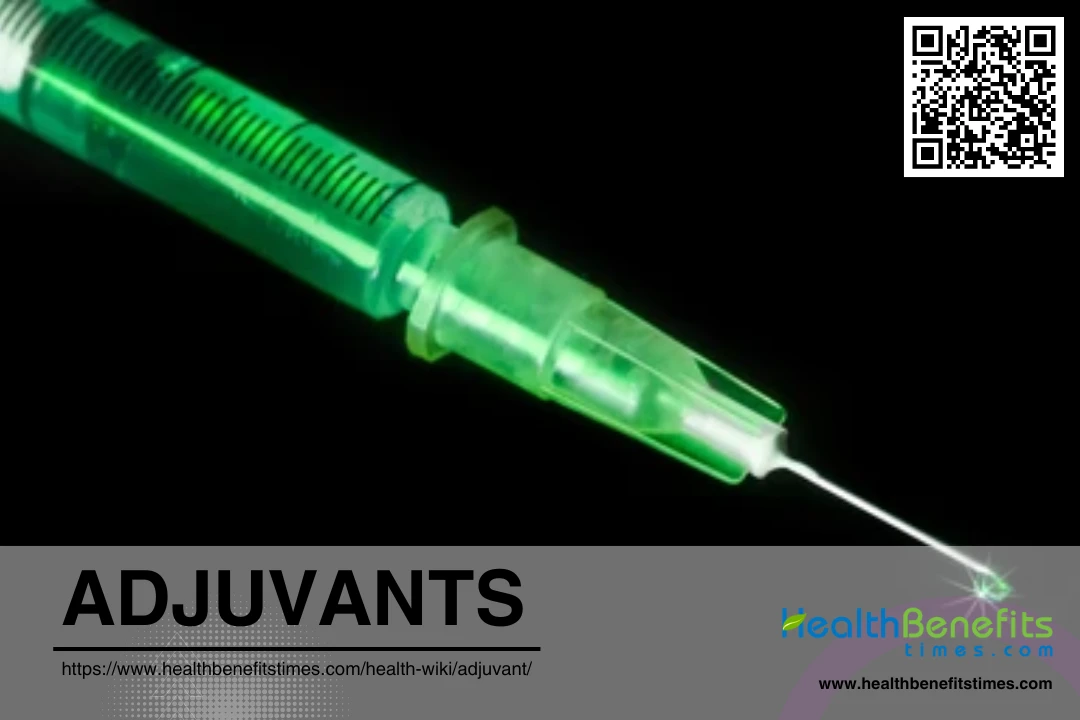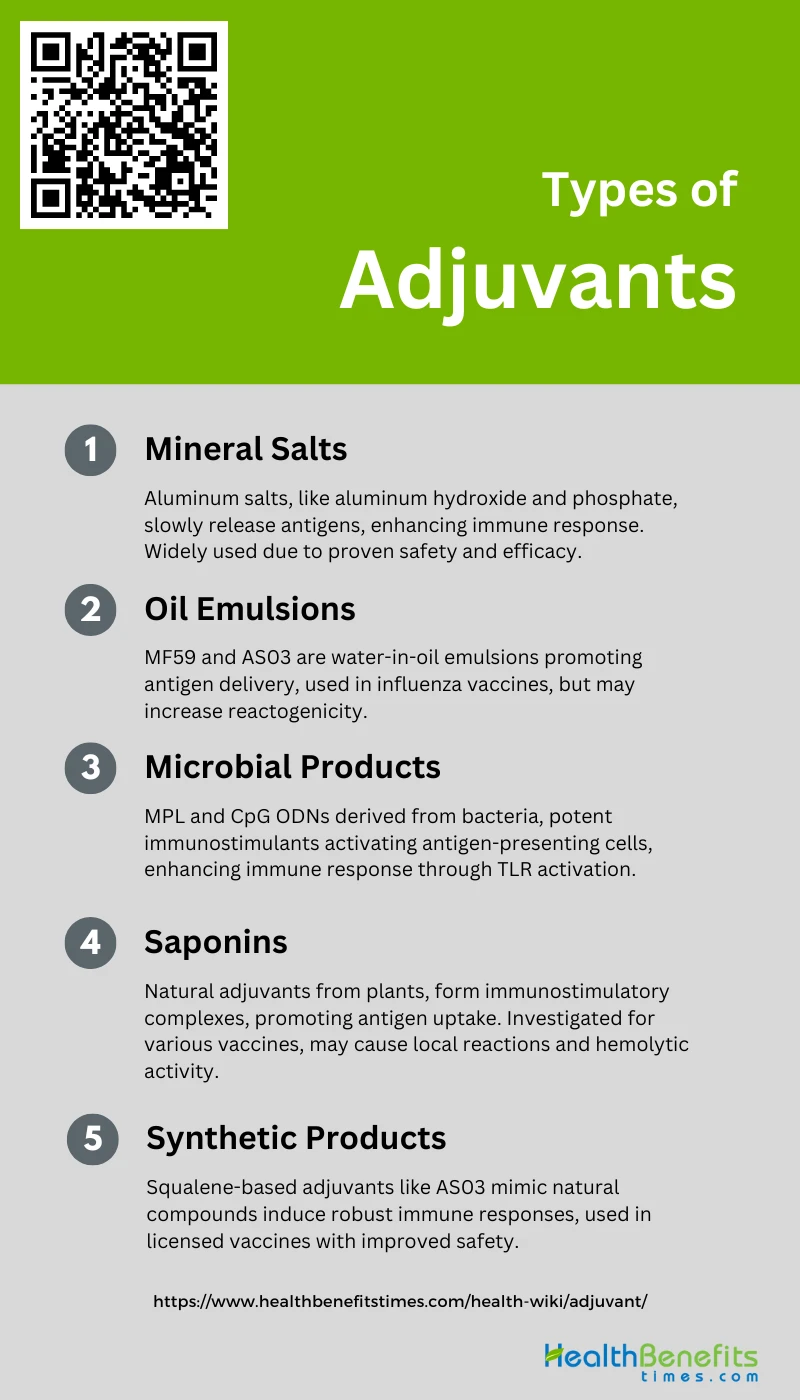 Adjuvants are substances that improve the effectiveness of vaccines in different ways. They have been used since the 1920s, when alum was discovered, to enhance antibody responses and make vaccines more effective. Adjuvants work by creating a favorable immune environment at the injection site, which involves activating innate immune responses, attracting immune cells, and improving the uptake and presentation of antigens. They can also influence the immune response to promote either hum oral or cell-mediated immunity, depending on the type of adjuvant used. However, concerns about toxicity and side effects can limit the development and use of adjuvants, so it’s important to find a balance between effectiveness and safety. Recent advancements in understanding innate immunity have provided new knowledge on how to design adjuvants that can enhance vaccine responses, especially for subunit vaccines that may not be very immunogenic on their own.
Adjuvants are substances that improve the effectiveness of vaccines in different ways. They have been used since the 1920s, when alum was discovered, to enhance antibody responses and make vaccines more effective. Adjuvants work by creating a favorable immune environment at the injection site, which involves activating innate immune responses, attracting immune cells, and improving the uptake and presentation of antigens. They can also influence the immune response to promote either hum oral or cell-mediated immunity, depending on the type of adjuvant used. However, concerns about toxicity and side effects can limit the development and use of adjuvants, so it’s important to find a balance between effectiveness and safety. Recent advancements in understanding innate immunity have provided new knowledge on how to design adjuvants that can enhance vaccine responses, especially for subunit vaccines that may not be very immunogenic on their own.
Adjuvants used in U.S. vaccines
Adjuvants are critical components in many vaccines used in the United States, enhancing the immune response and ensuring long-lasting protection against diseases. These substances are carefully selected for their safety and efficacy, playing a pivotal role in modern immunization strategies. Below is adjuvants commonly found in U.S. vaccines:
Aluminum
Aluminum compounds like aluminum hydroxide, aluminum phosphate, and alum are commonly used in vaccines approved by the U.S. Food and Drug Administration. These adjuvants have been used for over 60 years because they are safe, cost-effective, and help boost the immune response to different antigens. Aluminum adjuvants work by creating a depot at the injection site, allowing for a slow release of the antigen. This stimulates the immune system by activating cells like macrophages and dendritic cells, leading to the production of antibodies. While the exact mechanisms are not fully understood, aluminum adjuvants can induce local inflammation and activate various immune pathways. The amount of aluminum in vaccines is regulated to ensure safety. Although generally safe, aluminum adjuvants can cause local reactions like redness and nodules under the skin. Overall, aluminum adjuvants are an important part of vaccine formulation due to their effectiveness and established safety record.
Types of Adjuvants
Below is a list of various types of adjuvants that are commonly used in vaccine development.
1. Mineral Salts
Mineral salts, such as aluminum salts (e.g., aluminum hydroxide, aluminum phosphate), are among the most widely used adjuvants in human and veterinary vaccines. These compounds enhance the immune response by promoting the slow release of antigens and facilitating their uptake by antigen-presenting cells. Aluminum salts have a proven track record of safety and efficacy, making them a popular choice for many licensed vaccines.
2. Oil Emulsions
Oil emulsions, like MF59 and AS03, are water-in-oil emulsions that stimulate the immune system by creating a depot effect and promoting antigen delivery to immune cells. These adjuvants have been successfully used in influenza vaccines and have shown promising results in enhancing the immunogenicity of various antigens. However, their use may be associated with increased reactogenicity compared to aluminum-based adjuvants.
3. Microbial Products
Microbial products, such as monophosphoryl lipid A (MPL) and CpG oligodeoxynucleotides (ODNs), are derived from bacterial components and act as potent immunostimulants. MPL, a derivative of lipopolysaccharide (LPS), is a Toll-like receptor (TLR) agonist that enhances the immune response by activating antigen-presenting cells. CpG ODNs mimic bacterial DNA and stimulate the innate immune system through TLR9 activation.
4. Saponins
Saponins are natural adjuvants derived from plants, such as Qualia saponaria Molina (QS-21) and Quil-A. These compounds form immunostimulatory complexes with antigens and promote their uptake by antigen-presenting cells. Saponins have been investigated as adjuvants for various vaccines, including those against cancer and infectious diseases. However, their use may be limited by their potential for causing local reactions and hemolytic activity.
5. Synthetic Products
Synthetic adjuvants, like the squalene-based adjuvants (e.g., AS03, AF03), are designed to mimic the immunostimulatory properties of natural compounds while offering improved safety and consistency. These adjuvants can induce robust humoral and cellular immune responses and have been successfully used in licensed vaccines, such as those against influenza and human papillomavirus (HPV).
Safety and Regulation of Adjuvant
It is essential to ensure the safety and regulation of adjuvants in vaccines in order to maintain public trust in immunization programs. Adjuvants are crucial for enhancing the immune response to vaccine antigens, but they must undergo thorough safety assessments from the laboratory to post-marketing surveillance. Regulatory agencies, such as those in the EU, have stringent guidelines for evaluating new adjuvants to ensure they are safe and effective. These guidelines are regularly updated to keep pace with advancements in vaccine technology and the challenges posed by different adjuvant systems. Tailored safety assessments are necessary for Adjuvant Systems (AS) due to the diverse populations and diseases they target. Understanding the mechanisms of adjuvants is vital for developing safer and more effective vaccines, as it allows us to comprehend how these substances impact the immune system. In conclusion, the development and regulation of adjuvants is a complex process that requires a careful balance between immunogenicity and safety.


